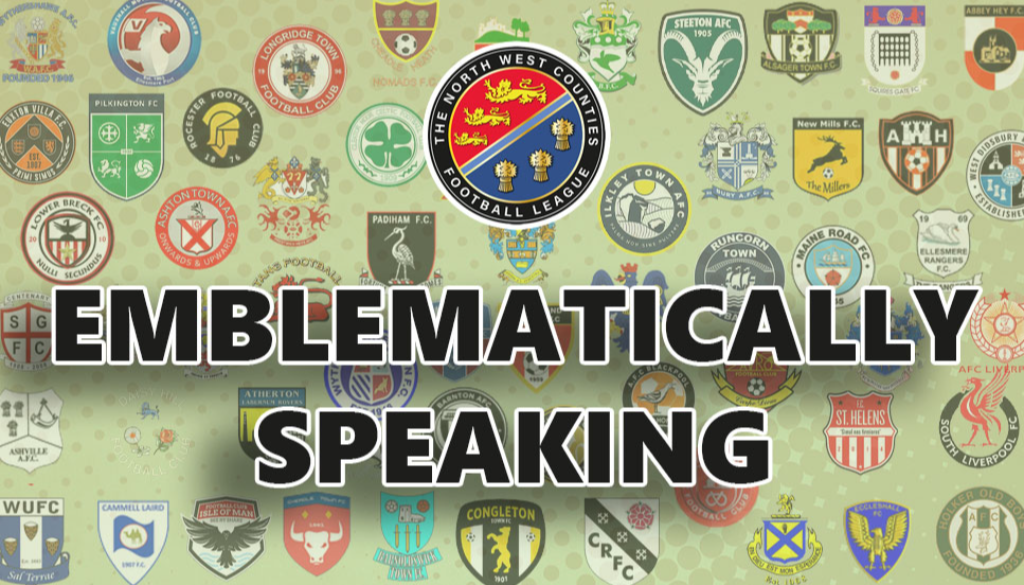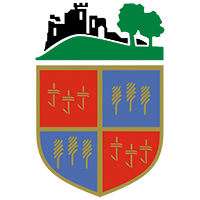
Emblematically Speaking - Kendal Town
Thu 22nd December 2022 | Kendal Town | By Martin Fallon
If we think of Kendal what is the first thing that springs to mind? Mint Cake perhaps – that peppermint flavoured sugar confection much treasured by climbers and mountaineers for the instant hit of energy when consumed? Famed explorers such as Sir Earnest Shackleton and Sir Edmund Hillary took Kendal Mint Cake with them on their most legendary expeditions.
Given the fame of this product might we expect it to feature on the emblem of Kendal Town FC? Well, the answer is no and, to be fair, which town or football club would wish to be defined by what is, essentially, a sweet. Having said that, there is always the town of Pontefract in Yorkshire, and, to move into more dangerous waters, Everton of course. There are others but I think I’d better leave that thought where it is.
NWCFL followers of a certain vintage may recall Netherfield FC who came into the League for the 1983/84 season. Kendal Town are, essentially, the same club having changed their name to what we have today via the name Netherfield Kendal. Netherfield left the NWCFL to become one of the founder members of Division One of the Northern Premier League in 1987 – and now they are back with us.
As said, there is no specific reference to confectionery products on the emblem of Kendal Town FC but what we do see is reference to the history of the town and that comes from the town Coat of Arms. We have a simple shield design with two devices (charges in heraldic terminology) repeated on the diagonals. This is taken directly from the town Coat of Arms – the first reference to which comes from the year 1610.
The gold outline comes from the background colour of the Coat of Arms and represents the colour of cowhide. What appear to be hooks on a red background are exactly that with the other device on the blue background being teasels. The hooks shown are bale hooks (there are many other names) which were simply used as a tool for moving heavy objects in warehouses etc. Traditionally, a bale of wool weighed something over 260 pounds which, in this new metric Britain of ours, comes to around 120 kgs, so any sort of assistance to move such a load would have been welcome.
Teasels are prickly plants which dry to resemble sharp hairbrushes. They were used, in the dried state, for raising the nap on finished wool cloth. This is all with reference to the wool trade which sustained industry in the town for many years. The Kendal Town Coat of Arms is finished with the Latin motto “pannus mihi panis” which can be translated as “wool is my bread”. The football club have simply replaced the Latin motto with the club name.
What you do not see in the town Coat of Arms is Kendal Castle which is represented at the top of the club emblem resting atop a grassy knoll (Kendal Hill – a glacial drumlin). This feature was added by the football club as the castle can be seen from the ground.
The castle was built in the early years of the 13th century as the home of the Barons of Kendal. Unlike many mediaeval castles this one did not last and has been a ruin since the Tudor period. However, at one time, this was the residence of the Parr family and if you think you recall the name Parr from Tudor history then you would be correct – Catherine Parr was the sixth and final wife of the Tudor King Henry VIII and unlike most of his previous 5 wives lived to tell the tale.
Not for the first time in this series we see how a football club emblem tells us a great deal about the history of the town or district that club represents and should you find yourself in Kendal with some time to spare Kendal Museum is a useful resource to inform much more detail that I can here. Of particular interest also is the display dedicated to the fell walker and writer Alfred Wainwright – a most fascinating chap.
With grateful thanks to Craig Campbell of Kendal Town FC for his contribution to this article.
 Emblematically Speaking - Kendal Town
Emblematically Speaking - Kendal Town
Thu 22nd December 2022 | Kendal Town
By Martin Fallon

If we think of Kendal what is the first thing that springs to mind? Mint Cake perhaps – that peppermint flavoured sugar confection much treasured by climbers and mountaineers for the instant hit of energy when consumed? Famed explorers such as Sir Earnest Shackleton and Sir Edmund Hillary took Kendal Mint Cake with them on their most legendary expeditions.
Given the fame of this product might we expect it to feature on the emblem of Kendal Town FC? Well, the answer is no and, to be fair, which town or football club would wish to be defined by what is, essentially, a sweet. Having said that, there is always the town of Pontefract in Yorkshire, and, to move into more dangerous waters, Everton of course. There are others but I think I’d better leave that thought where it is.
NWCFL followers of a certain vintage may recall Netherfield FC who came into the League for the 1983/84 season. Kendal Town are, essentially, the same club having changed their name to what we have today via the name Netherfield Kendal. Netherfield left the NWCFL to become one of the founder members of Division One of the Northern Premier League in 1987 – and now they are back with us.
As said, there is no specific reference to confectionery products on the emblem of Kendal Town FC but what we do see is reference to the history of the town and that comes from the town Coat of Arms. We have a simple shield design with two devices (charges in heraldic terminology) repeated on the diagonals. This is taken directly from the town Coat of Arms – the first reference to which comes from the year 1610.
The gold outline comes from the background colour of the Coat of Arms and represents the colour of cowhide. What appear to be hooks on a red background are exactly that with the other device on the blue background being teasels. The hooks shown are bale hooks (there are many other names) which were simply used as a tool for moving heavy objects in warehouses etc. Traditionally, a bale of wool weighed something over 260 pounds which, in this new metric Britain of ours, comes to around 120 kgs, so any sort of assistance to move such a load would have been welcome.
Teasels are prickly plants which dry to resemble sharp hairbrushes. They were used, in the dried state, for raising the nap on finished wool cloth. This is all with reference to the wool trade which sustained industry in the town for many years. The Kendal Town Coat of Arms is finished with the Latin motto “pannus mihi panis” which can be translated as “wool is my bread”. The football club have simply replaced the Latin motto with the club name.
What you do not see in the town Coat of Arms is Kendal Castle which is represented at the top of the club emblem resting atop a grassy knoll (Kendal Hill – a glacial drumlin). This feature was added by the football club as the castle can be seen from the ground.
The castle was built in the early years of the 13th century as the home of the Barons of Kendal. Unlike many mediaeval castles this one did not last and has been a ruin since the Tudor period. However, at one time, this was the residence of the Parr family and if you think you recall the name Parr from Tudor history then you would be correct – Catherine Parr was the sixth and final wife of the Tudor King Henry VIII and unlike most of his previous 5 wives lived to tell the tale.
Not for the first time in this series we see how a football club emblem tells us a great deal about the history of the town or district that club represents and should you find yourself in Kendal with some time to spare Kendal Museum is a useful resource to inform much more detail that I can here. Of particular interest also is the display dedicated to the fell walker and writer Alfred Wainwright – a most fascinating chap.
With grateful thanks to Craig Campbell of Kendal Town FC for his contribution to this article.


